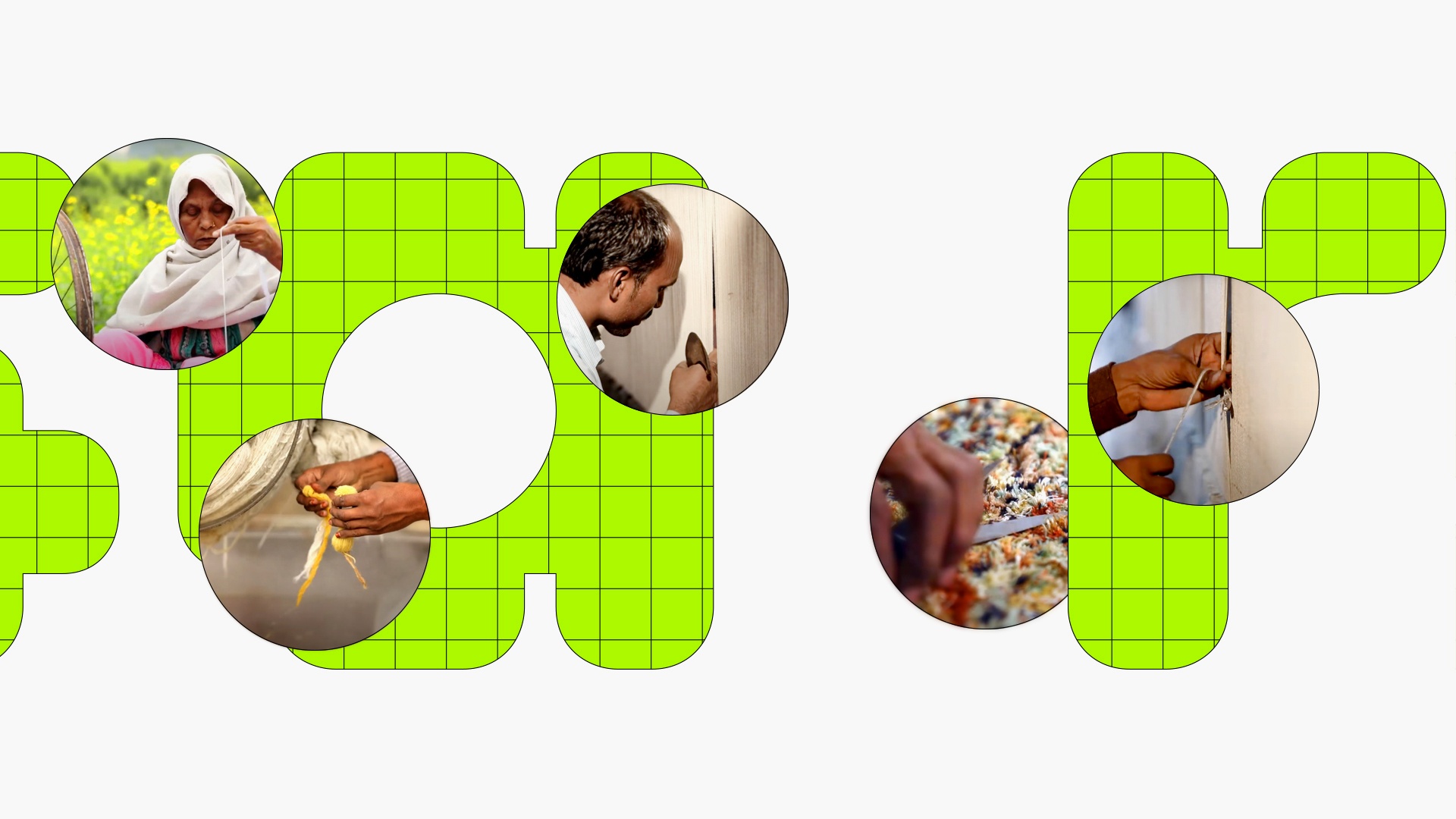Rug Craftsmanship

We have remained faithful to the natural materials, carefully preserving their inherent properties. Once a yarn is chosen there are countless ways in which it can be knotted and woven, twisted and looped to produce a handmade rug. These differing techniques produce a range of textural surfaces, from fine and flat to chunky and shaggy.
Whilst the precise detail of weaving techniques is the stuff of academia, here follows a brief introduction to the basics:
RAW MATERIAL
The beauty of handcrafting is fully focused on sourcing the best raw material (Wool from New-Zealand lambs, Pure silk from cocoons of silkworms, Bamboo-silk from bamboo plants etc.).
CARDING
Carding is the process of teasing and straightening the jumbled fibres of raw wool by hand.
SPINNING
The carded wool or other fibres can then be spun into yarn. Experienced spinners are able to produce yarn at various thicknesses to create rugs with higher or lower knot counts.
DYING
The most important person in the dyeing process is the Dye Master. He is responsible for matching the colours and preparing the dyes. Each dye takes about a day to create.
DRYING
The yarns are dyed and then left to dry naturally in the sun.
BALLING
Once the dyed yarns have dried, they are collected and wound into balls ready to be taken to the loom.
GRAPH
A large graph of the design sits behind the loom for the weavers to follow. It specifies the colour and position of every knot.
WEAVING
The weaving is carried out by skilled craftsmen working in synchronization on the loom. Most of our rugs are made with the Persian knot in which the yarn is knotted with a single knot technique that consists of wrapping a fiber completely around every other stand. The higher the knot count, the finer the rug.
WASHING
The rugs are thoroughly washed on both sides; water is squeezed through the pile with wooden paddles called ‘pharwa’ and left to dry naturally in the sun.
SHEARING
Once dry, the rug is laid flat and the pile cut neatly to the required height by hand.
CLIPPING
Clipping is another part of the finishing process; boundaries between different colours or pattern elements are carefully defined and differences in pile heights are smoothed.
BINDING
The final stage involves neatly wrapping the sides of the rug in a yarn that matches the design. The rug is then ready for its new home.